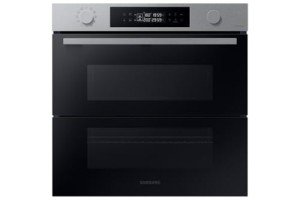20 Reasons Why Built In Oven Cannot Be Forgotten
The Comprehensive Guide to Built-In Ovens
Introduction
Built-in ovens are a staple in contemporary cooking areas, combining elegance with functionality. They provide a streamlined visual and effective cooking abilities, making them a favored choice for property owners and culinary lovers alike. This post dives into the advantages of built-in ovens, their numerous types, essential features to consider, installation pointers, and upkeep advice, along with regularly asked concerns.
Advantages of Built-In Ovens
Built-in ovens included an array of benefits that contribute to their appeal. Here are some key advantages:
- Space-Saving Design: Built-in ovens are developed to fit flawlessly into cabinetry, enabling a more organized and space-efficient kitchen design.
- Visual Appeal: They supply a sleek and modern-day appearance that can improve the total style of the kitchen.
- Improved Functionality: Built-in ovens often feature innovative features and innovations that support different cooking approaches.
- Enhanced Cooking Experience: Many built-in designs include self-cleaning functions, temperature probes, and programmable settings, enhancing the cooking experience.
- Increased Property Value: A properly designed kitchen with built-in appliances can improve the value of a home.
Kinds Of Built-In Ovens
Built-in ovens come in a number of types, each designed to satisfy various cooking choices and requirements. Here are the primary types:
Type of Built-In Oven
Description
Single Oven
A single, standalone oven for conventional baking and roasting.
Double Oven
Integrates 2 ovens in one system, enabling several dishes to prepare at various temperatures.
Wall Oven
Installed in the wall, freeing up counter space, suitable for small kitchens.
Stove
Uses fans to distribute hot air for even cooking, improving the results of baked goods.
Steam Oven
Uses steam for healthier cooking choices, preserving nutrients in food.
Key Features to Consider
When selecting a built-in oven, numerous features can impact performance and usability. Here are some vital functions to remember:
Cooking Modes
- Bake: Traditional baking with bottom heat.
- Broil: Top heat cooking suitable for browning and crisping.
- Convection: Circulates hot air for even cooking.
- Steam: Uses steam for much healthier cooking alternatives.
Size and Capacity
- Standard sizes generally range from 24 to 30 inches large.
- Think about the internal capability— it can range from 3 to 6 cubic feet, enabling various dish sizes.
Controls and Smart Features
- Touchscreen Controls: Easy programs and modifications.
- Smart Technology: Connectivity features permit for remote monitoring and control through smart device applications.
Energy Efficiency
- Look for designs with ENERGY STAR scores, showing lower energy intake.
Security Features
- Features like vehicle shut-off and child locks enhance security throughout operation.
Setup Tips
Setting up a built-in oven may need expert assistance, but here are some general pointers to bear in mind:
- Choose the Right Location: Ensure there's enough area in your cabinets for installation, keeping in mind ventilation requirements.
- Electrical Requirements: Check that your kitchen's wiring satisfies the oven's power requirements, specifically for electric designs.
- Level the Oven: Ensure the oven is level to promote even cooking.
- Protect the Oven: Attach it securely to the cabinetry to prevent motion during use.
Upkeep Advice
Regular maintenance is essential for the durability and efficiency of a built-in oven. Here's how to keep it in leading shape:
- Regular Cleaning: Wipe down surface areas after each use and perform deep cleaning periodically.
- Examine Seals: Inspect door seals for wear and ensure they maintain an airtight fit to improve energy efficiency.
- Calibrate Temperature: If food consistently comes out overcooked or undercooked, think about recalibrating the oven's temperature settings.
- Expert Servicing: Schedule yearly check-ups with an experienced service technician to keep optimum efficiency.
FAQs
What is the distinction between a built-in oven and a freestanding oven?
Built-in ovens are designed to be set up within cabinets, using a seamless appearance. On the other hand, freestanding ovens are standalone units that generally include their own cooktop.
Are built-in ovens more expensive than freestanding models?
Generally, built-in ovens can be more expensive due to the included setup costs and advanced functions. However, prices differ widely based upon brand, size, and functionalities.
Can I set up a built-in oven myself?
While it is possible to set up a built-in oven yourself, it is advised to work with a professional to ensure correct installation, particularly if modifications to cabinetry or electrical work are needed.
How often should I clean my built-in oven?
It is a good idea to clean your built-in oven frequently after heavy usage. For Built In oven and hob packages with installation , make use of the self-cleaning function if readily available or occasionally perform manual cleansing to prevent accumulation.
Built-in ovens are an important addition to any kitchen, using both visual appeal and advanced cooking abilities. By comprehending their types, functions, setup, and upkeep requirements, property owners can make educated choices that enhance their cooking experience and improve the total worth of their homes. As kitchen designs continue to evolve, built-in ovens will likely stay a prominent option for modern-day homes.
